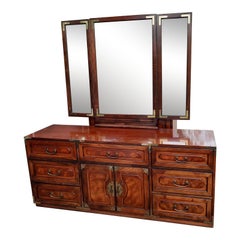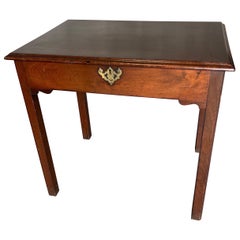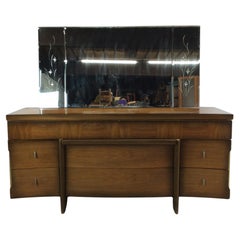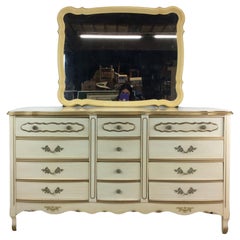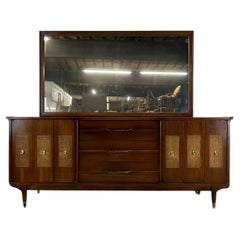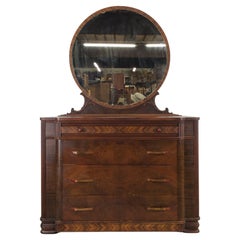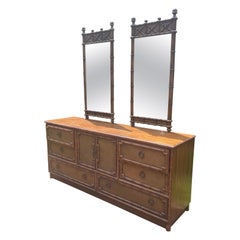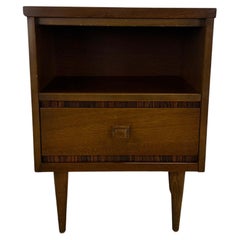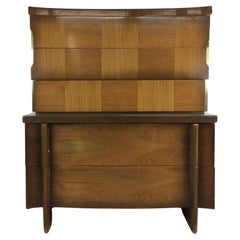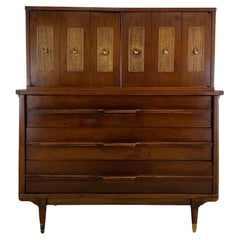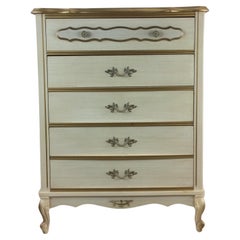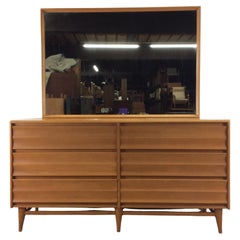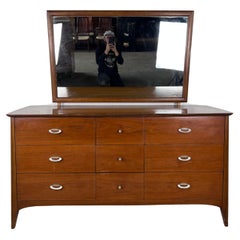Lowboy With Mirror
Late 20th Century North American Anglo-Japanese Lowboys
Brass
Antique 18th Century Lowboys
Mahogany
Vintage 1970s Canadian Mid-Century Modern Dressers
Wood
Mid-20th Century American Mid-Century Modern Dressers
Mirror, Walnut
Mid-20th Century American French Provincial Dressers
Plywood, Lacquer
Mid-20th Century American Mid-Century Modern Dressers
Brass
Mid-20th Century American Art Deco Dressers
Mirror, Bakelite, Wood
Mid-20th Century American Mid-Century Modern Dressers
Faux Bamboo, Rattan
Mid-20th Century American Mid-Century Modern Night Stands
Walnut
Mid-20th Century American Mid-Century Modern Dressers
Walnut
Mid-20th Century Mid-Century Modern Dressers
Brass
Mid-20th Century American French Provincial Dressers
Plywood, Lacquer
Mid-20th Century American Mid-Century Modern Night Stands
Brass
Mid-20th Century American Mid-Century Modern Night Stands
Walnut
20th Century American Mid-Century Modern Dressers
Faux Bamboo, Rattan
Recent Sales
Mid-20th Century American Mid-Century Modern Dressers
Mirror, Maple
Vintage 1960s American Mid-Century Modern Dressers
Walnut
Mid-20th Century American Mid-Century Modern Dressers
Mirror, Walnut
Mid-20th Century American Mid-Century Modern Dressers
Walnut
Mid-20th Century American Mid-Century Modern Dressers
Walnut, Formica
Vintage 1970s American Mid-Century Modern Dressers
Brass
Mid-20th Century American Mid-Century Modern Commodes and Chests of Drawers
Mirror, Birch
Mid-20th Century American Mid-Century Modern Dressers
Faux Bamboo, Rattan
Vintage 1960s Danish Mid-Century Modern Dressers
Wood
Mid-20th Century American Mid-Century Modern Dressers
Formica, Walnut
Vintage 1970s American Mid-Century Modern Bedroom Sets
Burl
Vintage 1950s American Mid-Century Modern Bedroom Sets
Birch
Vintage 1960s Mid-Century Modern Dressers
Walnut
20th Century American Bedroom Sets
Mother-of-Pearl, Mahogany, Satinwood
Mid-20th Century American Mid-Century Modern Night Stands
Birch
Vintage 1960s American Mid-Century Modern Dressers
Mirror, Walnut
Mid-20th Century American Mid-Century Modern Dressers
Faux Bamboo, Rattan
Vintage 1960s American Mid-Century Modern Credenzas
Wood
Mid-20th Century American Mid-Century Modern Bedroom Sets
Maple
Vintage 1950s American Mid-Century Modern Dressers
Mirror, Wood, Walnut, Porcelain
People Also Browsed
Vintage 1910s British Sheraton Desks and Writing Tables
Leather, Wood
Vintage 1970s American Campaign Beds and Bed Frames
Brass
Mid-20th Century Chinese Chinoiserie Decorative Art
Wood
21st Century and Contemporary Indonesian Mid-Century Modern Bookcases
Wood
Vintage 1980s American Mid-Century Modern Dressers
Ash, Ebony, Burl
Vintage 1950s French Brutalist Coffee and Cocktail Tables
Wood
Antique 1780s French Louis XVI Vanities
Kingwood, Walnut
Mid-20th Century American French Provincial Dressers
Maple
Mid-20th Century Desks and Writing Tables
Beech
Late 20th Century Italian Modern Bookcases
Glass, Ash
Mid-20th Century Other Screens and Room Dividers
Jade
Early 20th Century French Art Deco Vanities
Marble
Late 20th Century American Mid-Century Modern Commodes and Chests of Dra...
Chrome
Vintage 1910s American Arts and Crafts Table Lamps
Brass
2010s American Minimalist Wall Lights and Sconces
Brass, Stainless Steel
Late 20th Century North American Anglo-Japanese Night Stands
Brass
Lowboy With Mirror For Sale on 1stDibs
How Much is a Lowboy With Mirror?
A Close Look at Mid-century-modern Furniture
Organically shaped, clean-lined and elegantly simple are three terms that well describe vintage mid-century modern furniture. The style, which emerged primarily in the years following World War II, is characterized by pieces that were conceived and made in an energetic, optimistic spirit by creators who believed that good design was an essential part of good living.
ORIGINS OF MID-CENTURY MODERN FURNITURE DESIGN
- Emerged during the mid-20th century
- Informed by European modernism, Bauhaus, International style, Scandinavian modernism and Frank Lloyd Wright’s architecture
- A heyday of innovation in postwar America
- Experimentation with new ideas, new materials and new forms flourished in Scandinavia, Italy, the former Czechoslovakia and elsewhere in Europe
CHARACTERISTICS OF MID-CENTURY MODERN FURNITURE DESIGN
- Simplicity, organic forms, clean lines
- A blend of neutral and bold Pop art colors
- Use of natural and man-made materials — alluring woods such as teak, rosewood and oak; steel, fiberglass and molded plywood
- Light-filled spaces with colorful upholstery
- Glass walls and an emphasis on the outdoors
- Promotion of functionality
MID-CENTURY MODERN FURNITURE DESIGNERS TO KNOW
- Charles and Ray Eames
- Eero Saarinen
- Milo Baughman
- Florence Knoll
- Harry Bertoia
- Isamu Noguchi
- George Nelson
- Danish modernists Hans Wegner and Arne Jacobsen, whose emphasis on natural materials and craftsmanship influenced American designers and vice versa
ICONIC MID-CENTURY MODERN FURNITURE DESIGNS
- Eames lounge chair
- Nelson daybed
- Florence Knoll sofa
- Egg chair
- Womb chair
- Noguchi coffee table
- Barcelona chair
VINTAGE MID-CENTURY MODERN FURNITURE ON 1STDIBS
The mid-century modern era saw leagues of postwar American architects and designers animated by new ideas and new technology. The lean, functionalist International-style architecture of Le Corbusier and Bauhaus eminences Ludwig Mies van der Rohe and Walter Gropius had been promoted in the United States during the 1930s by Philip Johnson and others. New building techniques, such as “post-and-beam” construction, allowed the International-style schemes to be realized on a small scale in open-plan houses with long walls of glass.
Materials developed for wartime use became available for domestic goods and were incorporated into mid-century modern furniture designs. Charles and Ray Eames and Eero Saarinen, who had experimented extensively with molded plywood, eagerly embraced fiberglass for pieces such as the La Chaise and the Womb chair, respectively.
Architect, writer and designer George Nelson created with his team shades for the Bubble lamp using a new translucent polymer skin and, as design director at Herman Miller, recruited the Eameses, Alexander Girard and others for projects at the legendary Michigan furniture manufacturer.
Harry Bertoia and Isamu Noguchi devised chairs and tables built of wire mesh and wire struts. Materials were repurposed too: The Danish-born designer Jens Risom created a line of chairs using surplus parachute straps for webbed seats and backrests.
The Risom lounge chair was among the first pieces of furniture commissioned and produced by celebrated manufacturer Knoll, a chief influencer in the rise of modern design in the United States, thanks to the work of Florence Knoll, the pioneering architect and designer who made the firm a leader in its field. The seating that Knoll created for office spaces — as well as pieces designed by Florence initially for commercial clients — soon became desirable for the home.
As the demand for casual, uncluttered furnishings grew, more mid-century furniture designers caught the spirit.
Classically oriented creators such as Edward Wormley, house designer for Dunbar Inc., offered such pieces as the sinuous Listen to Me chaise; the British expatriate T.H. Robsjohn-Gibbings switched gears, creating items such as the tiered, biomorphic Mesa table. There were Young Turks such as Paul McCobb, who designed holistic groups of sleek, blond wood furniture, and Milo Baughman, who espoused a West Coast aesthetic in minimalist teak dining tables and lushly upholstered chairs and sofas with angular steel frames.
Generations turn over, and mid-century modern remains arguably the most popular style going. As the collection of vintage mid-century modern chairs, dressers, coffee tables and other furniture for the living room, dining room, bedroom and elsewhere on 1stDibs demonstrates, this period saw one of the most delightful and dramatic flowerings of creativity in design history.
- What is a lowboy dresser?1 Answer1stDibs ExpertApril 1, 2024A lowboy dresser is a type of dressing table. It's typically a small table that is shorter and narrower than a standard dresser, with one or two rows of drawers.
Lowboys are sometimes referred to as vanities. Vanity tables have also been variously known as dressing tables or makeup tables over the years, but no matter what we call them, and whether it's a sophisticated contemporary piece or an iconic vintage Luigi Massoni vanity, vanities have offered a special place for us to get ready for work, an early-morning appointment or lunch date or whatever lies ahead.
Find vintage lowboy dressers on 1stDibs. - Can mirrors be shipped?1 Answer1stDibs ExpertApril 5, 2022Yes, mirrors can indeed be shipped. The trick to packing them is to have the mirror and frame suspended by packaging, not just wrapped in bubble wrap. You’ll find a large variety of mirrors from some of the world’s top sellers on 1stDibs. And yes, you can even get them delivered.
- What is Eglomise mirror?1 Answer1stDibs ExpertFebruary 22, 2021An Eglomise mirror is a mirror created using the historical technique of painting glass with gold and silver leaf. This technique is typically used to create decorative glass and wall mirrors.
- What is a Venetian mirror?1 Answer1stDibs ExpertOctober 21, 2020
While polished metal mirrors have existed since ancient times, glass Venetian mirrors are thought to have first been produced on the Venetian island of Murano, in Italy, beginning in the 1500s (some research points to 1300 for Venetian mirrors). Set in ornate frames frequently bedecked with gold highlights or floral leaf designs, Venetian glass mirrors were handmade by artisans using refined, expert techniques for royalty and for members of the upper class. By the 17th century, Venetian mirrors were in high demand. Because antique Venetian glass mirrors are still very popular today, there are many knockoffs on the market. Today’s authentic Venetian mirrors are still produced only on the island of Murano.
- What is a trumeau mirror?1 Answer
- What are pier mirrors?1 Answer1stDibs ExpertApril 5, 2022Pier mirrors are mirrors that are placed on a supporting wall between two windows, sometimes in the same shape and style as the window itself. You’ll find a collection of pier mirrors from some of the world’s top sellers on 1stDibs.
- What is a compact mirror?1 Answer1stDibs ExpertOctober 12, 2021A compact mirror is a small metal case, usually round in shape, which can be flipped open. The top part has a mirror and the base half is filled with compact powder, along with a puff. This handy cosmetic product is widely used today. On 1stDibs find a variety of compact mirrors.
- What is a pocket mirror?1 Answer1stDibs ExpertApril 5, 2022A pocket mirror is a small personal grooming accessory used to check your appearance or apply makeup while traveling. It is usually round and has a hinged lid. Some also hold pressed powder or foundation. This type of pocket mirror is sometimes called a compact. On 1stDibs, shop a range of pocket mirrors.
- What is a bevelled mirror?1 Answer1stDibs ExpertFebruary 22, 2021A bevelled mirror is a type of mirror with edges that are cut to look as if the mirror has a framed-edge around it. This process makes the edges around the mirror thinner than the ¼” thickness of the mirror's middle portion.
- What is a floating mirror?1 Answer1stDibs ExpertOctober 12, 2021A floating mirror is a huge round mirror with two geometric elements that appear to be floating within its surface. When installed, floating mirrors are attractive and create depth and dimension. Shop a range of antique and vintage floating mirrors on 1stDibs.
- What is a federalist mirror?1 Answer1stDibs ExpertApril 5, 2022A federalist mirror is a type of wall mirror used for checking your reflection or purely for decorations. The mirrors date back to the dawn of the U.S. A number of manufacturers produced them from 1776 to 1806. Most feature elements of neoclassical style like fluted frames. On 1stDibs, shop a large selection of wall mirrors.
- What is a facet mirror?1 Answer1stDibs ExpertApril 5, 2022A facet mirror is a mirror designed in an intentionally artful way, intended to be a talking piece in your décor. Designs range from circular rounds, to stacked rectangles and even art deco styles. Shop a range of facet mirrors from some of the world’s top sellers on 1stDibs.
- What is a bullseye mirror?1 Answer1stDibs ExpertOctober 19, 2021A bullseye mirror is a decorative, circular, convex mirror. A mirror of this type can introduce more depth and personality to any room. On 1stDibs, find a variety of antique and vintage bullseye mirrors.
- What is a mercury mirror?1 Answer1stDibs ExpertApril 5, 2022A mercury mirror is a type of wall mirror that features mercury glass inside of a decorative frame. Mercury glass is the term for two panes of glass separated by silvering material. Early examples feature real mercury, while ones produced after the 1840s usually substitute silver nitrate. On 1stDibs, shop a range of mercury mirrors.
- What is a Murano mirror?1 Answer1stDibs ExpertApril 5, 2022A Murano mirror is a mirror made with glass crafted on the Italian island of Murano. The island has a rich glass-making history that stretches back over 1,000 years. Shop an array of beautiful Murano mirrors from top sellers worldwide on 1stDibs.
- What is a half mirror?1 Answer1stDibs ExpertNovember 2, 2021A half mirror is a reciprocal mirror, which is reflective on one side and transparent on the other side. A half mirror is also known as a half-silvered mirror, one-way mirror, semi-transparent and two-way mirror. Shop a collection of antique and vintage half mirrors from some of the world’s top sellers on 1stDibs.
- What is an infinity mirror?1 Answer1stDibs ExpertJanuary 25, 2019
An infinity mirror is composed of a pair of parallel mirrors placed so they create a series of increasingly smaller reflections that appear to recede to infinity. These pieces are typically used as room accents and in artwork, not for practical purposes.
- How old is the mirror?1 Answer1stDibs ExpertMay 30, 2024The mirror is more than 6,000 years old. Early examples made of polished obsidian rather than glass date back to 4000 B.C. Handheld glass mirrors became popular in ancient Greece during the 5th century B.C. Find a diverse assortment of mirrors from some of the world's top sellers on 1stDibs.
- When were mirrors invented?1 Answer1stDibs ExpertMay 3, 2024Mirrors were invented in ancient times. The earliest known human-made reflective surfaces date back to 4000 B.C., when artisans polished obsidian to a mirror-like finish. By the 5th century A.D., the Greeks had mastered the art of producing handheld mirrors for the purpose of grooming. On 1stDibs, explore a large collection of mirrors.
- What is a pier mirror?1 Answer
